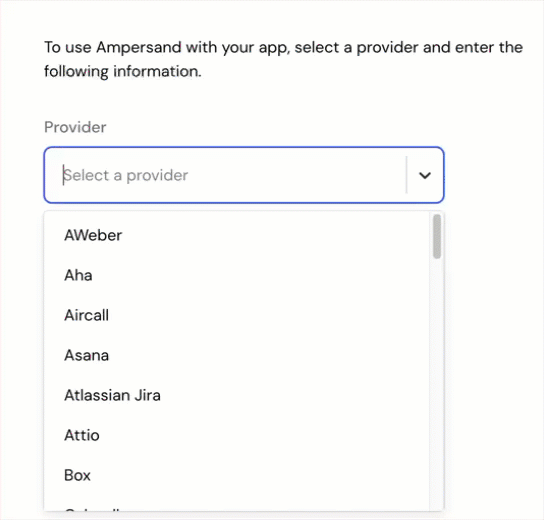Skip to main contentWhat’s Supported
Supported Actions
The Salesloft connector supports:
Example Integration
For an example manifest file of a Salesloft integration, visit our samples repo on Github.
Supported Objects
The Salesloft connector supports reading from and writing to the following 47 objects. Refer to the Salesloft API documentation for a description of them.
Before You Get Started
Before creating a Salesloft app, you need to sign up for a Salesloft Developer License. This license grants you the access and permissions needed to set up your development environment and manage your Salesloft applications.
To get started, simply contact the Salesloft team at [email protected] and get your Developer License.
After your account is set up, you will need to create a Salesloft app and acquire the following credentials from your Salesloft app:
You will then use these credentials to connect your application to Ampersand.
Creating a Salesloft App
Once your Salesloft account is ready, you need to create a Salesloft application.
-
Log in to your Salesloft account.
-
Navigate to Salesloft OAuth Applications. You can do this by selecting the OAuth Applications section from your Salesloft developer dashboard.
-
If this is your first app, click Create your first app. Click Create New under OAuth applications if you have already created an app before.
-
Enter the following details for the new app:
- Name: The name of your product
- Redirect URI:
https://api.withampersand.com/callbacks/v1/oauth
- Application Type: select “Yes, this will be a public application”
-
Once the app is created, note down the Application ID and Secret. You will need these to connect your app with Ampersand.
Add Salesloft App Details in Ampersand
-
Log in to your Ampersand Dashboard.
-
Select the project where you want to add the Salesloft App.
-
Select Provider apps.
-
Select Salesloft from the Provider list.
-
Enter the previously obtained Application ID in the Client ID field, the Secret in the Client Secret field, and the requested scopes in the Permissions field.

-
Click Save Changes.
Using the connector
To start integrating with Salesloft:
- Create a manifest file like the example.
- Deploy it using the amp CLI.
- If you are using Read Actions, create a destination.
- Embed the InstallIntegration UI component.
- Start using the connector!
- If your integration has Read Actions, you’ll start getting webhook messages.
- If your integration has Write Actions, you can start making API calls to our Write API.
- If your integration has Proxy Actions, you can start making Proxy API calls.


